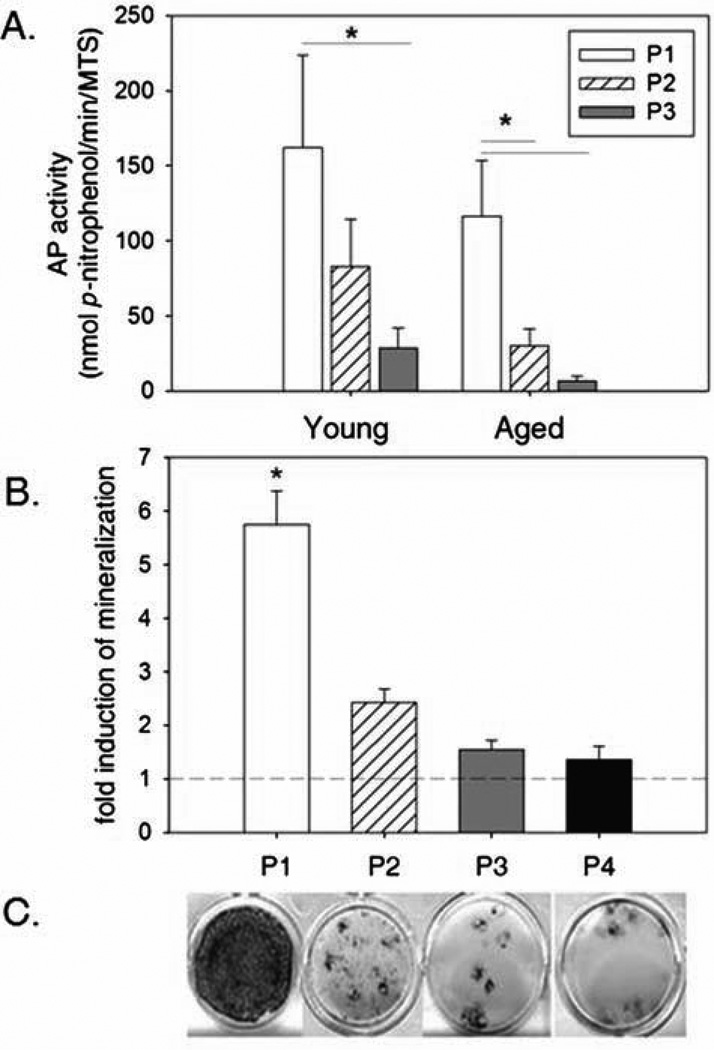Figure 5.
Osteogenic differentiation is diminished with increasing passage in canine MSC cultures. Increasing passage was found to have a significant negative effect on AP activity within and mineralization of canine MSC cultures (p ≤ 0.01 for both). (A) Analysis of AP activity in day 6 osteogenic cultures of MSCs harvested from the femoral bone marrow of both young and aged dogs reveals diminishing AP activity with increasing passage. AP activity in aged dog MSC cultures are diminished in comparison to corresponding cultures from young dogs at each passage. A significant decrease in AP activity occurs by the third passage in young dogs and by the second passage in aged dogs (*p < 0.05). (B) Quantitation of Alizarin red S staining in day 7 cultures of MSCs harvested from femoral bone marrow of young dogs reveals diminished capacity for mineralization with increasing passage number. Mineral deposition in Passage 1 (P1) cultures is significantly greater (*) than in all later passages examined (P1 vs. P2–P4; *p ≤ 0.01). (C) Images of MSC cultures (day 21) stained with Alizarin red S from an individual young donor reveals that mineralization occurs throughout P1 cultures of MSCs but is restricted to smaller nodules in higher passage cultures (from left to right, P1 > P2 > P3 ~ P4).

